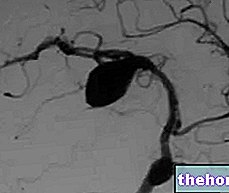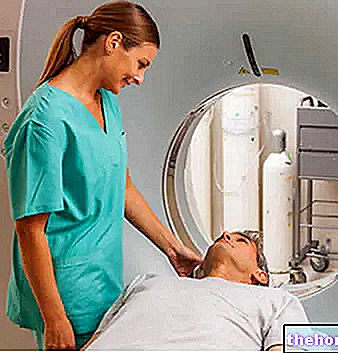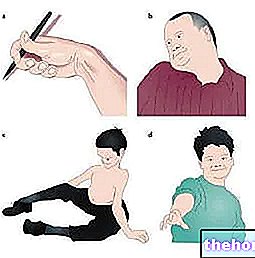Generality
Vagal stimulation represents a possible treatment for certain arrhythmic episodes: supraventricular tachycardias. In fact, by increasing the vagal tone, it is possible to interrupt the tachycardic event, slowing the heartbeat. Vagal stimulation can be performed through specific maneuvers or through certain drugs. In both cases it is essential to consult a doctor, to learn in detail how certain maneuvers are carried out and how to follow the drug treatment, as well as to evaluate the related risks.
The vagus nerve
Before describing the role of vagal stimulation in the treatment of supraventricular tachycardias, it is worth recalling some characteristic of the vagus nerve, or pneumogastric nerve.
The two vagus nerves, right and left, make up the tenth (X) pair of cranial (or encephalic) nerves of the twelve pairs present in the human body. They originate in the skull, like all the brain nerves, and extend to the abdomen
The vagus nerve is a mixed somatic and visceral nerve, as it has motor and sensory fibers (somatic component) and parasympathetic fibers (visceral component).
Parasympathetic fibers are responsible for innervating the involuntary smooth muscle of:
- Trachea.
- Bronchi.
- Lungs.
- Heart.
- Large vessels.
- Esophagus.
- Stomach.
- Intestine.
The motor fibers, on the other hand, innervate the following skeletal muscles:
- Cricothyroid muscle.
- Levator palatine veil muscle.
- Palatoglossus muscle.
- Palatopharyngeal muscle.
- Upper, middle and lower pharyngeal constricting muscles.
- Salpingopharyngeal muscle.
- Muscles of the larynx.
Finally, the sensitive fibers make contact with:
- External auditory canal.
- Mucosa of the pharynx.
- Mucosa of the larynx.
Thus, the vagus nerve controls and regulates fundamental physiological events, such as:
- Heart rate.
- Gastrointestinal peristalsis.
- Sweating.
- Movements of the mouth, to speak.
- Movements of the larynx, to breathe.
Control of heart rate by parasympathetic fibers occurs mainly through the right vagus nerve. In fact, the latter innervates the sinoatrial node, that is the dominant pacing center of the heart, and - if stimulated - slow sinus heart rhythm. The left vagus nerve, on the other hand, innervates the ventricle with less powerful effects and, if stimulated, blocks the impulses between the atrium and the ventricle (atrioventricular block).
Vagal stimulation in the treatment of tachycardias
Vagal stimulation is a possible therapeutic treatment to stop episodes of supraventricular tachycardia in full swing.
When we talk about vagal stimulation or increased vagal tone, we are referring to the same thing.
To obtain an increase in vagal tone in order to stop a tachycardia attack, some particular maneuvers can be performed or certain drugs can be administered. It should be emphasized that each described technique must be performed by a doctor, who will instruct the patient on the correct operations to be done and on the side effects associated with each of them.
As for the maneuvers, the best known and least dangerous to put into practice are:
- The Valsalva maneuver.
- The Muller maneuver.
These two operations consist in holding a deep breath as long as possible.
Other maneuvers are:
- Simultaneous compression of the eyeballs.
- Stimulation of the carotid sinus.
By means of the simultaneous compression of the eyeballs, exerted with the thumbs, by the doctor, it is possible to block the attack of supraventricular tachycardia.The pressure must be of such an extent that the patient feels pain. For this reason, it is not a recommended practice.
Carotid sinus stimulation, on the other hand, is a more effective and less painful technique. The carotid sinus is located at the level of the bifurcation of the common carotid artery. A better effect is obtained if the right carotid sinus is stimulated, compared to the left one, since, as we have seen, the right vagus nerve, passing through close to the right carotid, it innervates the sinoatrial node, that is the dominant marker center. The exact operation is performed by the doctor with the pressure of two or three fingers and by means of a vertical massage of the area.
The usefulness of this maneuver is given not only by the therapeutic aspect, but also by the diagnostic value that it can guarantee. In fact, if the patient is connected to an electrocardiograph and the stimulation is performed, it is possible to monitor the progress of the heart rhythm and understand the true nature of the increase in heart rate. There are three possible diagnostic conclusions:
- If the patient shows a slowing of the heartbeat, such that he reaches the sinus rhythm in a stable way, it means that the tachycardia attack is actually of the supraventricular type.
- If the patient shows a transient slowdown, such that, at the end of the carotid sinus stimulation, the rhythm increases again, it means that the increase in heart rate is due to another arrhythmia of the atrial type.
- If the patient does not show any slow heart rate, it means that the rate increase is due to a ventricular arrhythmia.
Drug-induced vagal stimulation involves the administration of:
- Drugs with direct action on the vagus nerve.
- Drugs with indirect action on the vagus nerve.
Drugs that act directly on the vagus nerve are those based on aceticoline, mecholyl or prostigmine. They work successfully, but they also have very unpleasant side effects.
Drugs that act indirectly on the vagus nerve are those used to raise blood pressure. The increased blood pressure stimulates the carotid sinuses, which consequently increase vagal tone. The drugs used are noradrenaline or metaraminol and should be administered intravenously.
At the time of drug treatment, the doctor must measure blood pressure at the same time, in order to make sure that it does not exceed 160 mmHg (the ideal value is 150 mmHg). Above this value, there is a risk of cause pulmonary edema. It is clear, also in this case, how important is the presence of the doctor in performing the aforementioned vagal stimulation procedure.




























